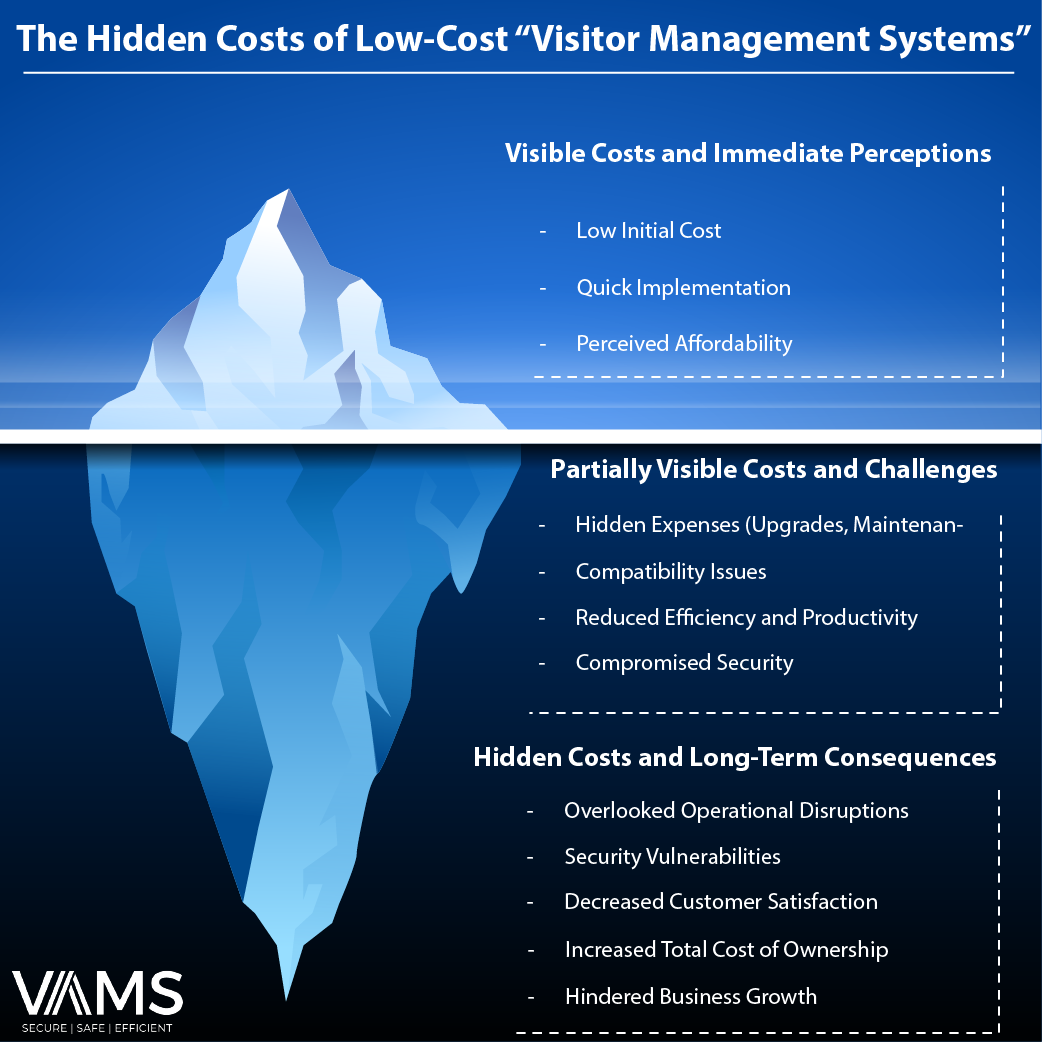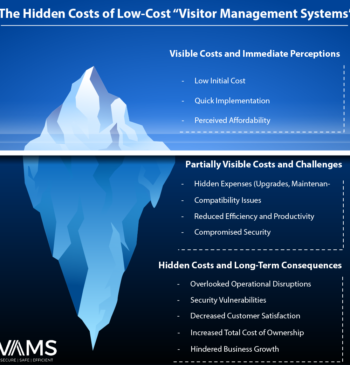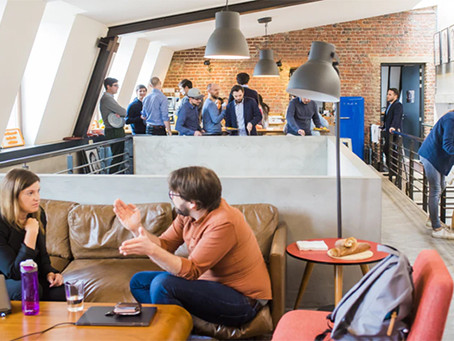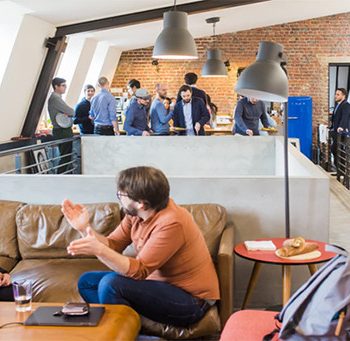14 Dec


Think of that old adage.
“It takes years to win a client, and only seconds to lose one.”
You could be meeting the client’s weekly metrics.
You could be helping them partner up with industry leaders, resulting in fat commissions.
But it just takes one error on your part.
And they’ll start looking at your nearest competitors as options.
The capitalist world can be built on love and loyalty—but most of the time, it just isn’t.
Why?
Keeping a client isn’t just about how well you do the job for them.
It is about your image—your perceived power in their eyes.
Your company’s “power” rests on a lot of granular details:
- Its social capital.
- The UI/UX of its apps.
- The design of its office.
- The speed of its office Wi-Fi.
- Its Google My Business reviews.
- The smile of your front-desk receptionists.
- The speed at which a client can meet the host after entering the front doors.
And all of these things together exert a peculiar psychological effect on these clients.
They want you to look powerful so that they look powerful.
Your brand is not just about you.
It’s also a reflection of them, your clients.
They are validated when they know they’ve chosen a competent brand as their service provider.
So, every time your client enters your world, you have to somehow reinforce this impression of power.
You have to design an experience that creates the idea of your company as worthy of their time and money.
And that experience relies hard on the physical environment your client inhabits.
Why the Client’s Environment is Your Responsibility
Your client has to experience the physical environment every day.
And you are the one who has to design this experience to go to plan.
Even outside your office.
Your client is always—at least subconsciously—processing the minute details.
The road, the traffic, the car’s air-conditioning, the zebra crossings, the pavement, the doors, the front doors, the front desk, the lighting, the ventilation, the elevator, the staircase, the corridors, the desks, the chairs, the room temperature, the desktop technology, and more.
When these elements are up to working standards, they don’t scrutinize them.
A client won’t praise a functional elevator for doing its job by going up and down.
But the moment any of these elements start failing them in some way…
They will blame their discomfort on an external human agent.
Usually the one most responsible for the space they are currently in.
We blame the:
- The cab driver for a smelly cab.
- The traffic cop for the busy crossroads.
- The company who owns the stuffy, unventilated office.
- The building manager for the slow-as-molasses security process.
- The receptionist who didn’t inform the HR of the client’s monthly visit.
In some cases, like the traffic cop and the employees, the people aren’t even necessarily responsible for the mishap. But people love blaming other people.
And, so, by nature, a client is someone who is primed to blame your company during a client visit.
Even if the client is late by his own error, there’s always the possibility he blames this on your organization.
There are two main issues you need to question yourself about at this point:
- How do you avoid this negative impression?
- More importantly, how do you prevent the clients themselves from making an error?
It’s simple.
You do that by setting the experience to work seamlessly.
You can’t control the cab driver’s body odour.
But you can clarify the client’s visit at the main checkpoints.
Point A → Point B → Point C.
The road → the building → the room.
These are the three key chapters to creating that story of power in your client’s mind.
#1 The Road: Send Precise Directions a Week in Advance
Big cities can be hard to get around.
Especially for non-drivers who use local cab services.
An Uber driver willing to go to your downtown office during peak hours?
That’s as elusive as a unicorn.
Waiting for one could take more minutes off your life than smoking a cigarette can.
On one of those bad traffic days, we can get desperate enough to return to our older, barbarous folkways.
Back when we’d bully the nearest cab or rickshaw driver in the rush.
Certainly, you want your client to avoid this process.
What can make this process more sensible?
There’s an obvious solution here:
Letting the client know your Google Map location as soon as the appointment is set.
Generally, appointments are set a week or so in advance.
When you do this through a modern infrastructural element like a visitor management system, the visiting client can be sent a Google Map location at the instant it is set.
This allows them to inspect the route and book a cab days in advance.
- They won’t have to worry about last-minute adjustments.
- They won’t have to imagine sweating, their shoe soles melting on the hot tarmac, in an attempt to hail a cab impromptu.
- They won’t have to imagine dealing with the headcases who might pop out of the random universe while they are doing so.
This is a brilliant solution—a prevention rather than a cure.
It prizes the client’s dignity even before the experience is supposed to start.
Right on the client’s smartphone.
These modern-day visitor management systems connect to the client via SMS, email, and other communication modes.
And so your company puts the ball in the client’s court early.
The client is given the time to set up the commute.
If mistakes are made on the road to your office, it certainly won’t be your fault.
A win-win situation for your company.
Now, once this hypothetically happy client reaches your building, what’s the next potential pitfall?
The building itself.
#2 The Building: Informed Receptionists are Powerful Receptionists
Office buildings are complex monsters.
Anyone can get lost within the intricate network of floor levels, corridors, doors, offices, and other access points.
In this virtual maze, the client has to find the host’s office.
Let’s imagine a client, “Mrs. Swaminathan.”
Her host is “Mr. Gajjar.”
How does Mrs. Swaminathan find Mr. Gajjar’s office in a building that has more than 500 offices?
- She calls the receptionist from the car.
- Or she asks the receptionist at the desk itself.
But would a receptionist really know all the important details?
Receptionists in an office building might have to remember thousands of appointments and check-ins daily.
So, most of the time, it isn’t realistic to expect them to know important details at the drop of a hat.
And a receptionist who has no pre-knowledge of the appointment is more of a hindrance than a help.
Imagine a receptionist who doesn’t know who Mrs. Swaminathan is, what she looks like, and what gender she identifies under.
That could get embarrassing.
An uninformed receptionist will not know which people are involved in the process.
And if they don’t know that, then they cannot even give directions.
They would show hesitance, or flare up in anxiety, or even do the worst thing just to sound like they are informed: give wrong directions.
Not the best customer experience for your brand.
What’s the obvious solution here?
How do you foolproof this against any possibility of human error?
Give the receptionist a tablet kiosk connected to your company’s visitor management system.
The sequence of events would proceed like this:
- Step 1: Setting the Appointment
On the 5th of December, 2022, Mr. Gajjar sets an appointment for Mrs. Swaminathan. The appointment would be for a job interview at 10:00 AM on the 12th December, 2022.
- Step 1: Setting the Appointment
- Step 2: Automated Visitor Management Mechanism
As soon as Mr. Gajjar set the appointment, the visitor management software immediately sent a QR code link to Mrs. Swaminathan’s email and SMS inboxes.
- Step 2: Automated Visitor Management Mechanism
- Step 3: Day of the Appointment
On the day of the appointment (12-12-22), the receptionist’s tablet scans Mrs. Swaminathan’s QR code, and immediately is shown the appointment’s data field with the required information, such as Mr. Gajjar’s name and the purpose of Mrs. Swaminathan’s visit.
It would look something like this:
- Step 3: Day of the Appointment
| Host | Visitor | Purpose of Visit | Entry Time | Exit Time |
| Mr. Y. Gajjar | Mrs. S. Swaminathan | Job Interview | 10:00 AM, 12/12/22 | – |
In this way, the receptionist is informed, and can quickly offer the information he has to.
An informed receptionist is a powerful one.
And the client subconsciously records their confidence.
#3 The Room: Evolve Your Ergonomics for Privacy, Comfort, & Utility
Ergonomics.
What does it mean?
No, it doesn’t just mean that adjustable revolving chair you sit on.
The term covers a wider radius of human experience.
Physical ergonomics are the elements of a working environment that make that environment more efficient.
- A woman’s weight correlated to a seatbelt’s tension.
- The distance and angle between your eyes and the computer screen.
- Comfortable furniture and a glass of water for a client who has just entered.
- Setting a suitable room temperature for the client, who is probably wearing a formal suit.
Setting a suitable room temperature for the client, who is probably wearing a formal suit.
Further, there are other issues that ergonomics can cover.
For one, privacy.
- Between each division of labour.
Data analysts may need to work away from the bustle of creative marketers. - Between each level of corporate seniority.
Managers prefer not to work around their executives. And vice-versa. - Between clients and their account managers.
We’ll get to this part later.
These are socializations that are often necessary.
Because things can get messy if the wrong person hears the wrong thing.
Unintentional eavesdropping can sink a company.
This is not an exaggeration.
- A manager should probably not hear the gossip in the bullpen of the 10 executives who serve under him.
- An entry-level executive should not hear a team of seniors and managers discussing his weaknesses without any filter.
And if a client eavesdropped on a conversation by mistake?
The repercussions if a client heard the honest opinion of their service provider would be the worst of the lot.
It would certainly end in the termination of the account and it could also extend to the client badmouthing your organization to other potential clients in the city.
Awkward.
How does one ensure a safe level of privacy as per each room in the office building?
- By creating access points to each department-assigned or seniority-assigned area : A floor of executives have one entry. A group of their manager’ offices can have another entry altogether. A waiting room or lobby, where the client waits, will also have its own.
- Then, by creating security checkpoints at each of those access points : At these access points, install electronic doors that only open after swiping a card or via facial recognition technology.
- Then, by using a visitor management system to monitor who gets access where : The visitor management system can store access authorization of each card/biometric, log in-times and out-times, and oversee who goes where.
In this way, your organization would keep people where they are supposed to be.
It would seem like a place years before its time.
Not as evolved to withstand Ethan Hawke’s skills, but enough to impress a client.
Your office doesn’t have to have a top secret government’s ergonomics to do that.
But it can also have another one of the most popular aspects:
Free Wi-Fi.
To a client, what’s cooler than free Wi-Fi?
Not much.
Most of us see it as a god-given right to free Wi-Fi in 2022, so there should be no reason why this service can’t be provided at the level of the client.
While they gather their thoughts before a meeting, or while a host might be running late, Wi-Fi is the hero.
It puts choice back in the visitor’s hands.
They can browse a topic they were researching, complete the detailing on the project on a spreadsheet, or even finish the podcast they were listening to.
It’s certainly a power move on a company’s part.
Think of other ways to exude brand power in this last leg of a client’s journey.
When they are inside your doors, what else can you do for them?
For example, think of the restaurant and hotel dining business.
In this case, the company’s main focus is clients having their orders served quickly.
As the tables fill up, the strain on the kitchen staff will peak, and they need everything in working order to keep up the brand’s aura of power and competence.
That would require an entire chain of logistics and inventory management to be as seamless as possible.
Third-Party Food Provider → Hotel Pantry → Hotel Kitchen → Dining Table
The most valuable asset is time.
No diner wants to wait half an hour for their meal.
And no head chef wants to be kept waiting for their ingredients.
How can hotels best deal with the backgate process of managing third-party food and beverage providers and contractors?
And how can they deal with how the food stuff gets handed off to the pantry managers and then the chefs?
A visitor management system can execute all this with its barebones framework.
At the backgate security checkpoint, the data entry would look something like this:
Asset/Delivery | Quantity | Contractor | Deliveryperson | Entry Time |
Potatoes (20 kg sacks) | 50 nos. | Godson & Sons | Mr. F. Shetty | 6:28 AM, 12/12/22 |
Beer (Pack of 24 cans) | 20 nos. | Amigo Breweries | Mr. C. Pereira | 6:46 AM, 12/12/22 |
Truffles (15 kg boxes) | 5 nos. | Pig Tales Ltd. | Mr. J. Driver | 7:07 AM, 12/12/22 |
As time passes, hotel managers can use the data records to optimize the process.
For example:
- They can make sure that, before peak hours on weekends, there is more alcohol in stock.
- They can use the data to find out that the pantry tends to overstock potatoes on weekdays i.e. letting the potato suppliers know to moderate their deliveries.
The possibilities are many.
It’s not just a tool for corporate and hotel management, but for almost every typology out there: education, banking, warehouses, manufacturing, and factory management,
Conclusion: The Tip of the Iceberg is All That Matters
Whatever service your company offers, client visits remain the same.
Clients have to move from road to building to room.
The whole system is connected.
The client may only see a small part of this system—the tip of the iceberg, so to speak.
But if the tip is an unfavourable experience, the client’s trust takes a fall.
Underneath, 99% of the system may work perfectly every single time.
But that isn’t going to be known to the client.
And if the 1% goes wrong, the 99% doesn’t matter.
Keeping this system flawless is a hard task, no doubt.
Any underlying human error might eventually rear its ugly head in the client’s presence.
That’s why you need a foolproof, digitized infrastructure.
So that you stay above the margin of human error.
And so that clients know they chose well in coming to your establishment—your company.
A utopia where their time and experience is your priority.
The secret isn’t about telling them you are powerful.
It is about showing them.
Power isn’t just your CEO’s slick three-piece suit.
It isn’t just your best salesman’s eloquence.
It isn’t even necessarily the money your company generates.
It is also how much of a calming influence your company’s services can wield over a given clientele.
And all these elements of the physical environment, overseen by digital tools in the background, are designed for the best client experience.
From the door of the cab to the door of the conference room, the client’s journey can be optimized.
And that’s how your company makes its mark.
What’s the most startling thing about this story?
The difference between an impressed client and an indifferent one can be a visitor management solution with a strong workplace management architecture.
Even a small piece of software can cast a large shadow.
In a new world where clients can be as cutthroat as your competitors, it is important to stay ahead by using even these invisible parameters that lie under the surface.
Subscribe to our Newsletter
HEAD OFFICE
VAMS Safeguard Pvt. Ltd.
+91 22-4170-7575 [email protected]C-209/210, Mittal Commercia Premises Co. Op. Soc. Ltd., Near Mittal Estate, Andheri East, Mumbai – 400059
HEAD OFFICE
Suite 1902, 1212, Avenue Of the Americas, New York, NY 10036
© 2025 by VAMS GLOBAL.






